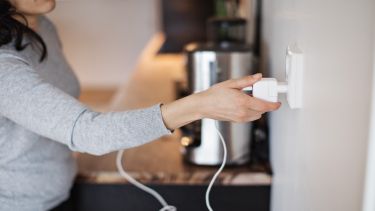Just before the early May bank holiday, customers of electricity providers Octopus Energy received a slightly unusual request. The company was asking them to use more energy over the bank holiday weekend, rather than conserve energy for the sake of the planet. In fact, Octopus Energy are offering to pay 2p/kWh for every unit of energy used between 1pm and 4pm on Sunday 10th May.
Their email to customers says UK is at risk of blackouts due to multiple factors: COVID-19 lockdown, the bank holiday weekend and the weather. In their words, using more energy will “help protect the UK from blackouts and make Britain greener” by balancing the grid and supporting renewable power providers.
With sunny spells and wind predicted and businesses shut down, it's predicted that the UK’s energy demand will reach new lows. When demand falls, small solar and wind energy generators are often asked to switch off, which can waste green power and mean a loss of business for renewable energy generators.
But is bringing in negative electricity prices for consumers a good idea? Is this event a one-off or could it become much more normal?
We asked Flora Biggins and Rachel Lee, whose work forms part of the Energy Institute at The University of Sheffield, to explain.
“Balancing electricity supply and demand on a second-by-second basis can be a tricky business at the best of times. Add a high proportion of renewables, reliant on unpredictable weather conditions, into the mix and you’ve got a whole new level of complexity. The National Grid doesn’t just have to balance supply and demand; they also have to meet many other constraints to ensure the system remains stable.
“In the future new technologies such as fast batteries and even electric cars may be used to manage this, but in the meantime, it’s necessary to keep some traditional generation plants online.
“With the current COVID-19 lockdown in place, electricity demands have reduced and are expected to be very low over the bank holiday weekend, which is also coinciding with high solar and wind output. As a result it may be necessary to ask renewable generators to shut down so that there are enough traditional plants operating.
“However, if demand remains high enough, then that generation could stay online. One way to do this is to encourage us all to bake more bread during the periods of lowest demand! We can do that by paying home bakers for the electricity they use. This won’t necessarily cost more overall because the National Grid also pays generators compensation when they have to turn them off.
“In the longer term, the National Grid has a host of mechanisms under development to deal with growing unpredictability and maintain stability. One of the existing systems is the Balancing Mechanism, which rectifies discrepancies between electricity produced and consumed in near real-time. The cost associated with providing this system balancing is known as the Imbalance Price, and historically is positive 99.77% of the time*.
“However, when electricity demand is low and generation is provided by a high percentage of renewables, negative Imbalance Prices can occur. Under such circumstances generators are paid to reduce electricity production and consumers to increase demand, so this is one mechanism by which electricity suppliers can profit from increased demand. As we shift towards a lower carbon electricity system, giving power to consumers may take on a whole new meaning!”
Both Flora and Rachel are PhD students in the Department of Chemical and Biological Engineering.
To hear more from Rachel Lee on the electricity grid and how it works, check out her recent feature on the Naked Scientist podcast.

